A Change for Life for the Galapagos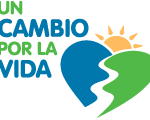
Meeting someone like Daniel Proaña restores my faith in humanity. He is an inspiration and with his vision and family support he has the potential to have a much needed impact on the next generation of Galapageans.
I was introduced to Daniel through Joaquin Leguia, the founder of ANIA and Tierra de Niños Tierra de Niños really inspired me and I was fortunate to see it in action in the overpopulated shanty town of Comos in Lima (see article here). I then visited an eco school in a rural area of Cusco (see article here). Going to the Galapagos and having the opportunity to meet someone with similar values and ideas as Joaquin was a very special treat. Daniel, who has a degree in Applied Ecology, gave generously of his time to talk to me about his ideas and we had some long and interesting discussions. He also took me to see two very contrasting schools in San Cruz.
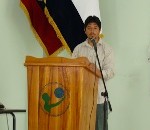 I will share some of what Daniel told me.
I will share some of what Daniel told me.
The problems facing young Galapageans today is that many of the children do not know how to grow food, fish or swim or ride a bike. They have completely lost contact with the land.
The settlement history of the Galapagos is very colourful, beginning as a penal colony and later including stories of mystery and murder. Rural life came first on the Gallapagos and it was not an easy life. The islands have little or no fresh water supply. Farming was in the highlands where the soil is more fertile. Ships came with supplies once a year. People in the highlands only came to the coastal towns once or twice a year to get sugar and salt and other basics.
Galapagos is very young in terms of human settlement. It is only in the past 50 years that families have become established in the Galapagos.
The tourist trade began in the 1960s and people began moving to the towns for work.
Henney, a German, began using small fishing boats for trips. In the 1970s small companies from outside the Galapagos began bringing tourists. Metropolitan Touring, an Ecuadorean company, started the first tourism boats and cruises. They are still active today.
In the 1990s Daniel’s father was offered a job to open an office in Port Ayora on San Cruz. In this time tourism really grew and hotels began popping up.
Up to the year 2000 tourism continued to grow but the towns did not develop much. However some roads were built and San Cristobal became the capital for government and public institutions.
In terms of the population of the Galapagos, 60% live on San Cruz, 39% on San Cristobal and 11% on San Isobella. San Cruz is the main centre for tourism with several flights per day. San Cristobal has much less and not all cruises even visit the island.
Isabella is known as the last treasure with its flamingos and penguins and volcanoes. Plenty of tourism is happening but it is not organized. Despite being a World Heritage site, you can still get a hotel for $7 a night, service is very low quality and the town itself is underdeveloped. Local pressure is not allowing outside investors – not even from the other islands.
Informal tourism is growing. Tourists are coming to the islands and doing day trips rather than coming with organized cruises. This has made the Galapagos more affordable and provided even more business opportunities for the islanders.
Now there are few people living in the highlands and there is very little farming. Over 80% of food is imported. Only a little short term agriculture remains such as tomatoes and peppers. The majority of Galapageans live and work in the towns that have grown with little urban planning.
The biggest challenge that Daniel sees is that parents are raising their children to live completely unsustainable lives. They drive their kids to school, own cars and live in concrete houses with no gardens. They are not allowing their children to learn. The majority of children do not know how to grow food or catch fish and many don’t even know how to swim! Many children know the names of places on the mainland better than they do the islands. People are living day by day and working to buy new cars or build bigger houses. They do not understand or realize the problems their lifestyles are causing. They are living for fast changes. Quality of life is being lost and the kids are suffering.
All the while Daniel is talking to me I am thinking he could be talking about any Western society. The same problems are everywhere in this increasingly globalized world.
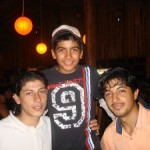 In 2008 Daniel’s life changed forever. His younger brother, at age 15 was killed in a motor vehicle accident on San Cruz. He was a passenger and the car he was driving in lost control and was hit by an oncoming car. This incident shook the lives of everyone on San Cruz. Things like this just did not happen in the Galapagos. It was a tragic loss not just for his family but for San Cruz. Patricio was a much loved member of society. He was the president of his school’s student council and was a socially and environmentally aware young man with an interest in working towards a better future for the Galapagos.
In 2008 Daniel’s life changed forever. His younger brother, at age 15 was killed in a motor vehicle accident on San Cruz. He was a passenger and the car he was driving in lost control and was hit by an oncoming car. This incident shook the lives of everyone on San Cruz. Things like this just did not happen in the Galapagos. It was a tragic loss not just for his family but for San Cruz. Patricio was a much loved member of society. He was the president of his school’s student council and was a socially and environmentally aware young man with an interest in working towards a better future for the Galapagos.
Patricio’s family reevaluated their lives and made the decision to create a legacy for their son and brother. His father quit his job in the town council and in 2009 the family formed an organization: “Un Cambio Por La Vida” (A Change for Life) with the aim of building sustainable communities in the Galapagos.
Daniel sees one of his organisations most important roles as being to bring the community and organisations together. There are many NGO’s working in the Galapagos but often there is not much dialogue between them and sometimes even conflict.
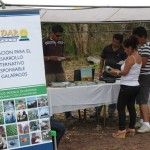 Together with the community and other organisations such as FUNDAR (Foundation for alternative responsible development of Galapagos, and the support of AVINA (Leadership for Sustainable Development in Latin America), seven focus areas have been identified and projects are underway. Daniel explained some of these to me.
Together with the community and other organisations such as FUNDAR (Foundation for alternative responsible development of Galapagos, and the support of AVINA (Leadership for Sustainable Development in Latin America), seven focus areas have been identified and projects are underway. Daniel explained some of these to me.
Alternative Mobility Initiatives
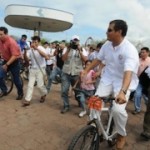 Promoting the use of bicycles and the development of safe cycle paths. Education programs on bike and road safety. Daniel proudly told me that last year when the president visited the Galapagos, he was greeted at the pier on Santa Cruz by 350 cyclists. When offered a bike, the president rode into the town, leading the cyclists.
Promoting the use of bicycles and the development of safe cycle paths. Education programs on bike and road safety. Daniel proudly told me that last year when the president visited the Galapagos, he was greeted at the pier on Santa Cruz by 350 cyclists. When offered a bike, the president rode into the town, leading the cyclists.
An Oceanic Experience School
Educating children about the ocean, the beach and the bays on the island. Teaching skills such as swimming, snorkeling, diving, surfing and kayaking and environmental issues. Equipment has been purchased and the Charles Darwin Foundation has provided a building near the beach.
This is akin to Joaquin’s Tierra de Niños, hence my introduction to Daniel. Links have been established with ANIA and areas of land have been set aside for children to learn to grow plants for food as well as learn to help in the conservation of endemic plants.
Youth Sustainable Visions
Giving youths a voice. Strengthening the role of youths in articulating their views and identifying young leaders to be trained in leadership skills and public policies. Daniel explained that all policies made by adults are short term and often change when there is a change in leadership in the government offices. Youths need to be involved in community development and have responsibility for seeing these bought to fruition.
Sustainable Inter-Cultural Pact
Recognition and understanding of the cultural diversity in the Galapagos and promote a more inclusive involvement in sustainable development. Daniel explained there are problems with the perceptions of the different cultures. Afro Ecuadorians tend to be cab drivers and labourers, doing the work that Galapogeans do not want to do. Indigenous Ecuadoreans are people who have moved here from the highlands (the mountains) and are also considered a minority group. Cambio por la Vida runs surveys each year to find out how Galapogeans perceive their quality of life and to assist in promoting dialogue between different cultural groups and promoting better citizenship.
Other projects involve:
- Working towards better urban planning.
- Promoting more sustainable farming
- Conservation of endemic species
- Working towards “Galápagos, cero combustible fósiles” (Galapagos, zero fossil fuels)
Links:
Un Cambio por la Vida: www.elpatito.net/ and www.funcavid.org/ (Spanish only)
FUNDAR: la Fundación para el Desarrollo alternativo Responsable de Galápagos
(Foundation for alternative responsible development of Galapagos)
www.fundargalapagos.org/portalj/ (Spanish only)
AVINA: Leadership for Sustainable Development in Latin America
www.avina.net/eng/ (English)

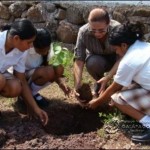
Pingback: Two schools on Santa Cruz: Galapagos | el año sabático